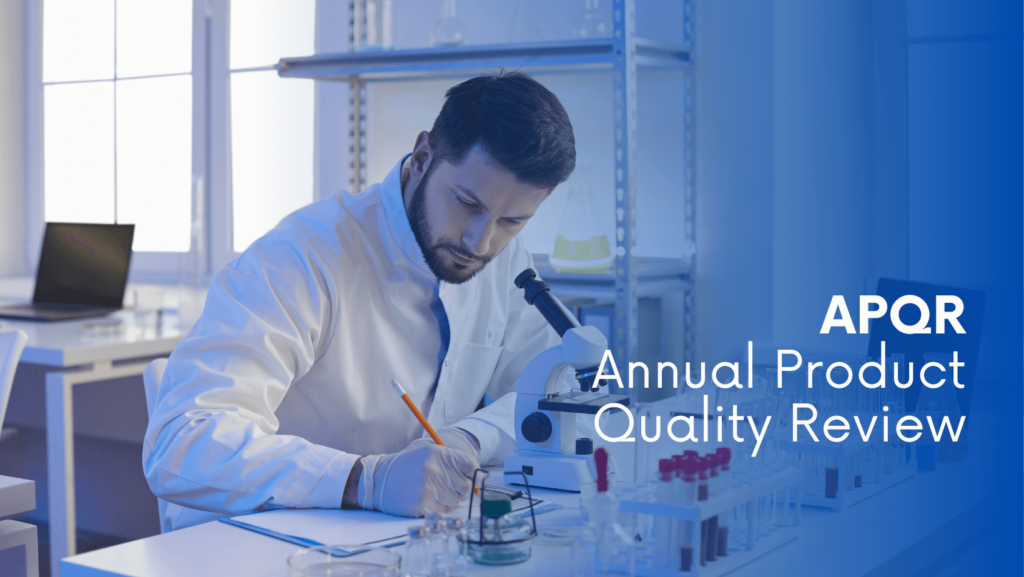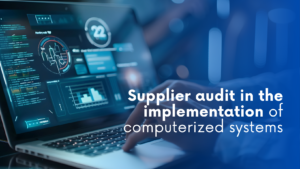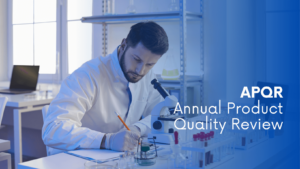Do you thoroughly conduct your Annual Product Quality Review?
Working in the pharmaceutical industry, we are obliged to perform the Annual Product Quality Review, although it may be called variously: Annual Product Review – APR (FDA) or Product Quality Review – PQR (EU, ICH7), the idea of such a review is one: it is an organized, comprehensive summary of data (production, QC, complaints, etc.) about a medicinal product in order to assess the quality of production in the previous year and make necessary corrections if any deviations are detected.
The Quality Review of products under manufacturing licence is organised by the organisation’s Quality Assurance department, but we must remember that all organisations should be involved in the preparation of data for the review.
All departments should also take responsibility for providing the necessary data for review in a timely and accurate manner.
Beyond fulfilling a regulatory obligation, the APQR brings several significant benefits, such as:
- Ensuring compliance with regulatory requirements and demonstrating control over organisational processes.
- Assessing the status of approved processes for specific products or product groups.
- Identifying and prioritising business improvement opportunities.
- Serving as a basis for making product improvement recommendations to senior management.
What information do we need?
Generally, there is no fixed timeframe for preparing APR/PQR, but it’s recommended to adhere to the principle of “the sooner, the better.” Moreover, to ensure a thorough report, all product-related data should be included. The minimum amount of data that may have an impact on quality should be reviewed.
a) Connect with the product
- starting materials and packaging materials
- critical results of process and product controls
- all CAPA for product and process
b) Discrepancies arising during the previous year
- all rejected batches and related investigations
- all critical deviations and related investigations along with assessment of effectiveness of resulting CAPA
- all changes to process, analytical methods or documentation of marketing authorization
- returns, complaints, recalls, and related investigations
c) Devices and installations
- qualification and validation status of equipment, devices, process
- all CAPA for equipment and installations (ex. HVAC, clean media etc.)
- all CAPA for equipment and installations (ex. HVAC, clean media etc.)
d) Other considerations:
- results of stability monitoring program and all adverse trends
- overview of all trends and possible requests for changing limits
- all technical agreements and contract manufacturing agreements

What should we pay attention to when performing an APQR?
The report should provide an assessment of product quality, including whether it meets acceptance criteria or requires improvements. In the event of issues critical to product quality and safety, a root cause analysis must be conducted, and corrective and preventive actions (CAPA) should be established to address the causes of nonconformance. Additionally, the report should summarise the findings from each area of the review, concluding with an overall summary and final conclusions on:
- product stability – whether a deterioration/improvement in the product’s quality attributes was noticed throughout last year, whether stability tests were carried out to confirm/extend the time during which we guarantee the highest product quality.
- device qualification/validation status – the devices/installations had a “qualified” status and the processes were “validated” throughout the previous year, was there a validation review according ours internal SOP’s. Any delays, if so, what impact did it have on the product in question? Were there delays, and if so, what impact did they have on the product?
- documentation – Did the documentation in our QMS confirming the quality and repeatability of processes have to be significantly modified/changed, were all changes in the documentation made on time in accordance with change control procedures?
- technical / technological – What technological changes were introduced, were they forced to change due to their obsolescence, regulatory changes, or the result of audits (internal or external)? Have any innovations been introduced and has their impact on the final quality of the manufactured product been examined?
- registration – Changes were introduced affecting market authorization or registration dossier? Were there any changes requiring the approval of the appropriate regulatory authorities?
- contracts – Have there been any supplier changes in the last year, were suppliers audited according to schedule and were quality agreements respected?
- training – Were employees properly trained, re-trained, were the trainings effective? Were the training procedures up-to-date and adapted to the actual situation?

Conclusions from APR/PQR:
It is essential to remember that the APQR is not just a collection of data but a strategic tool for improving product quality, process efficiency, and ultimately, patient safety. The review should conclude by addressing the key questions:
- Is the manufacturing process under control?
- Does the process require corrective actions to maintain compliance and product quality?
- Should any process be revalidated?
In summary, the Annual Product Quality Review (APQR) plays a critical role in ensuring the consistency and safety of pharmaceutical products. By evaluating the effectiveness of manufacturing processes and identifying potential issues, it helps organisations comply with regulatory requirements while promoting continuous improvement. The APQR should result in clear conclusions regarding product stability, process control, and the need for any corrective actions or revalidations. Additionally, it provides an opportunity to set quality objectives for the following year, ensuring that the organisation remains focused on maintaining high standards of product quality and safety. A well-executed APQR not only strengthens compliance but also enhances operational efficiency and supports the long-term success of the business.
If you need help with your Annual Product Quality Review, contact us and let our team of specialists assist you.
Dawid Pogoda
Professional Validation Specialist








